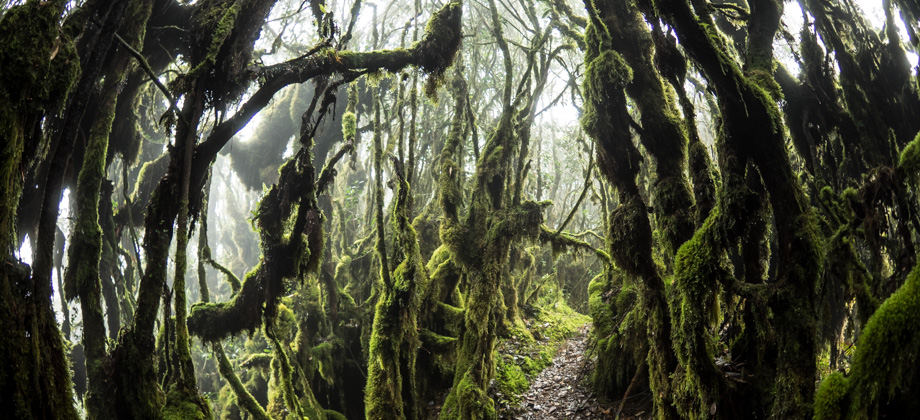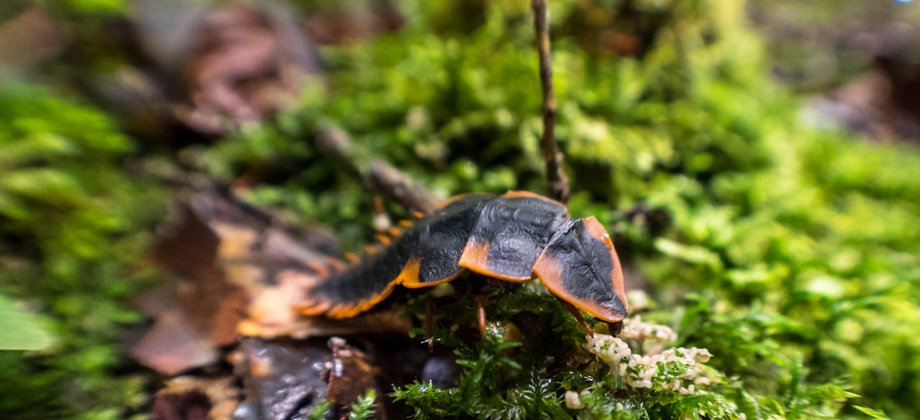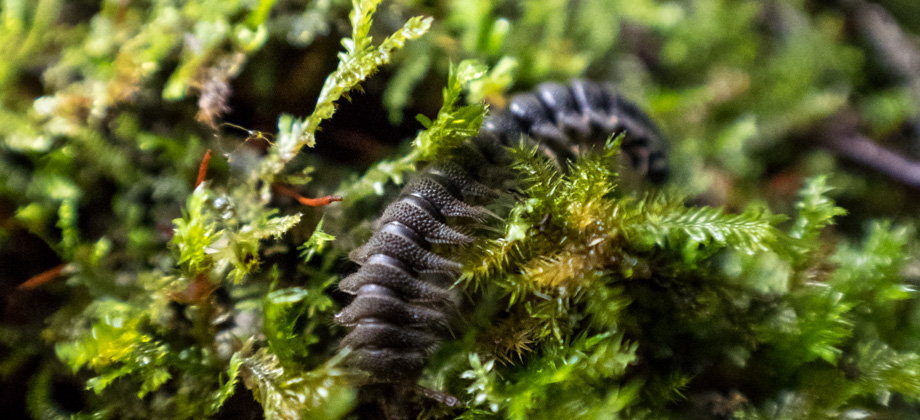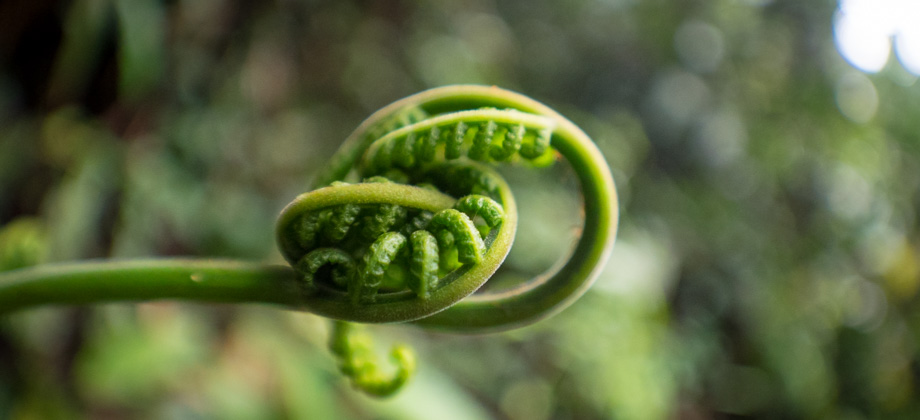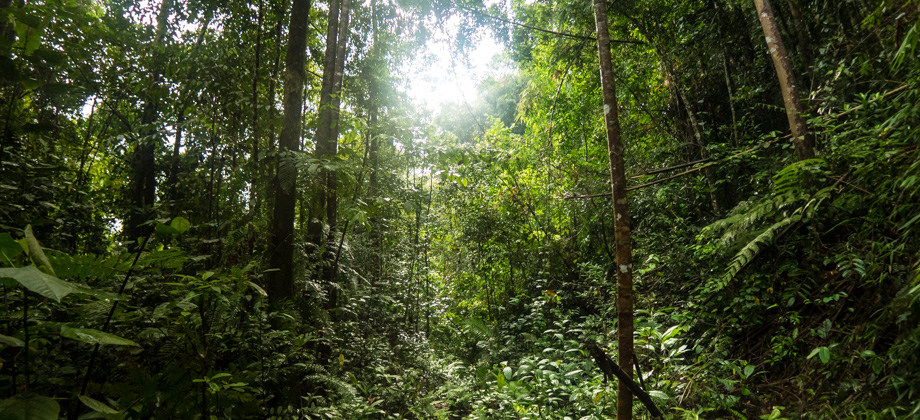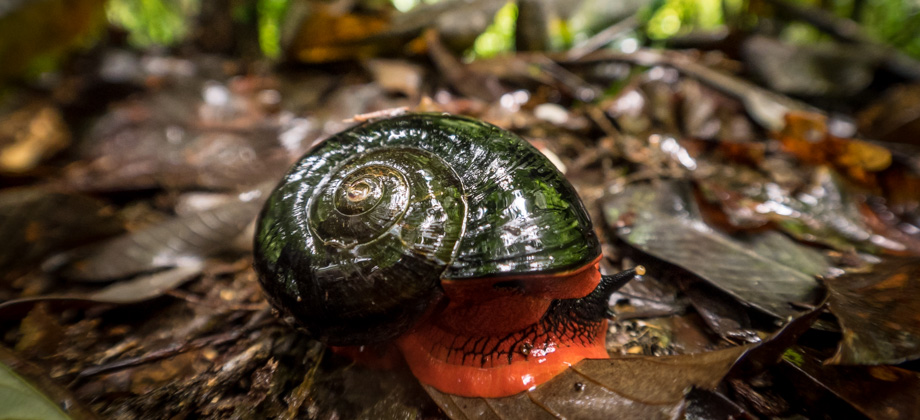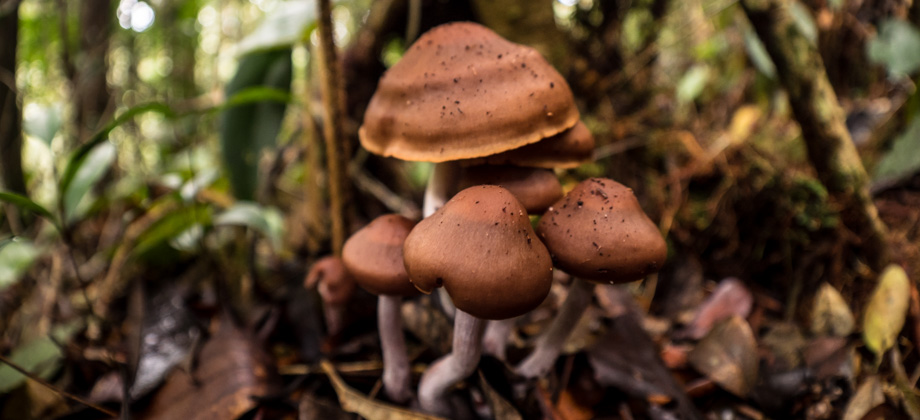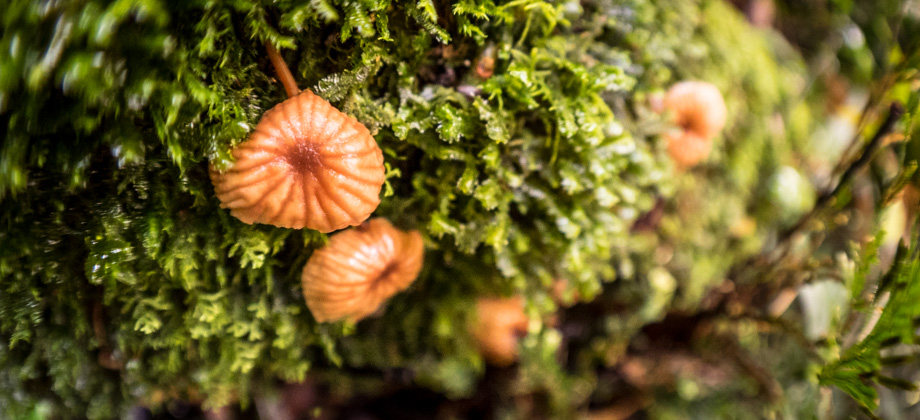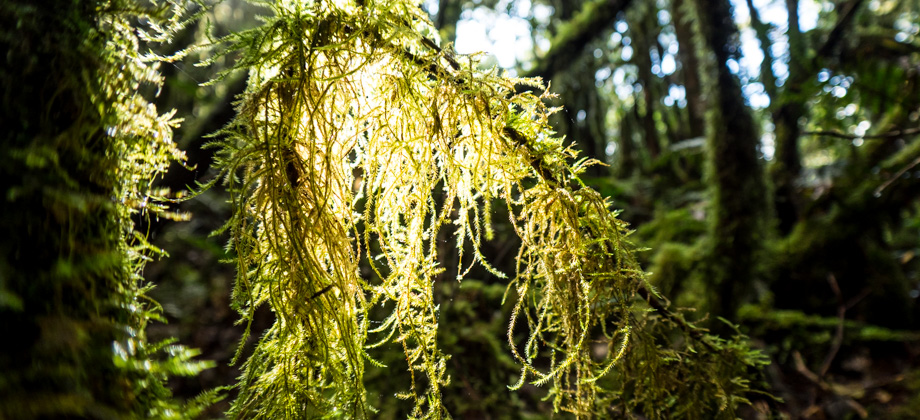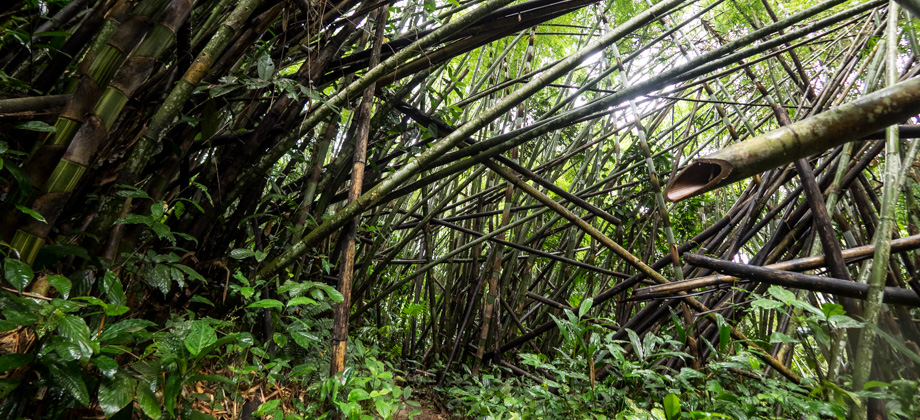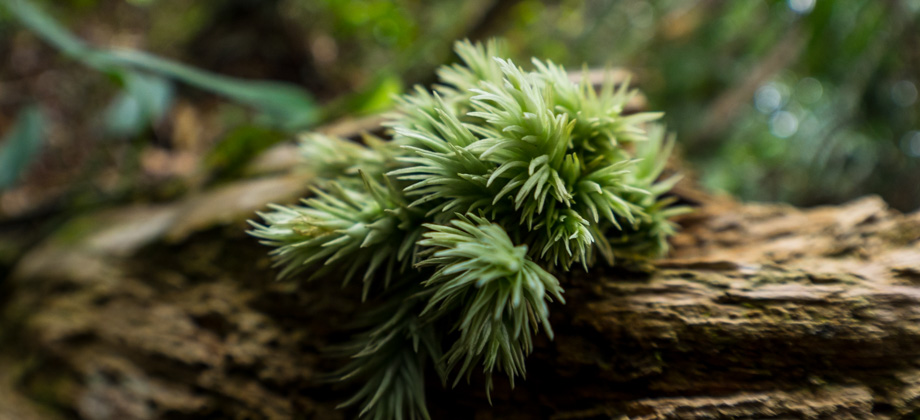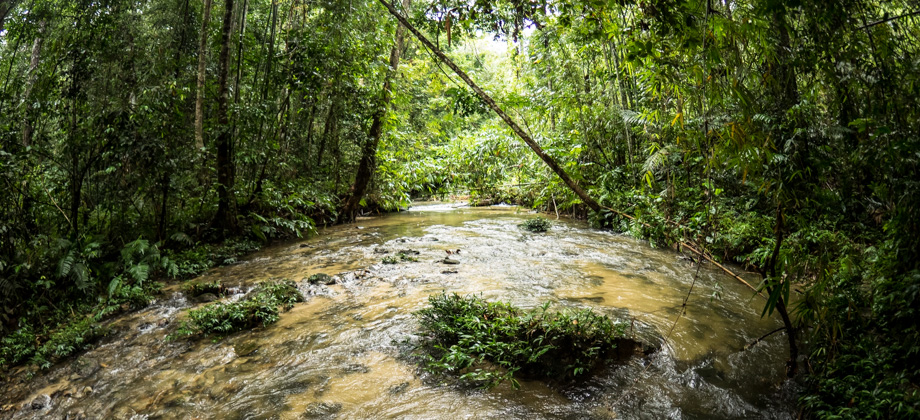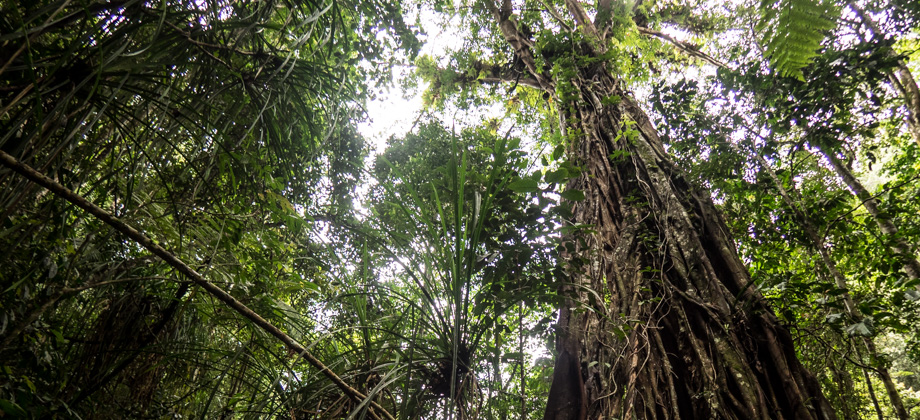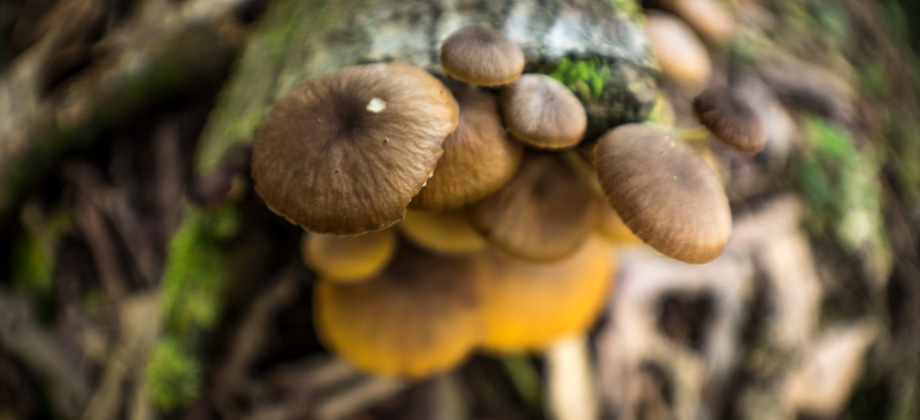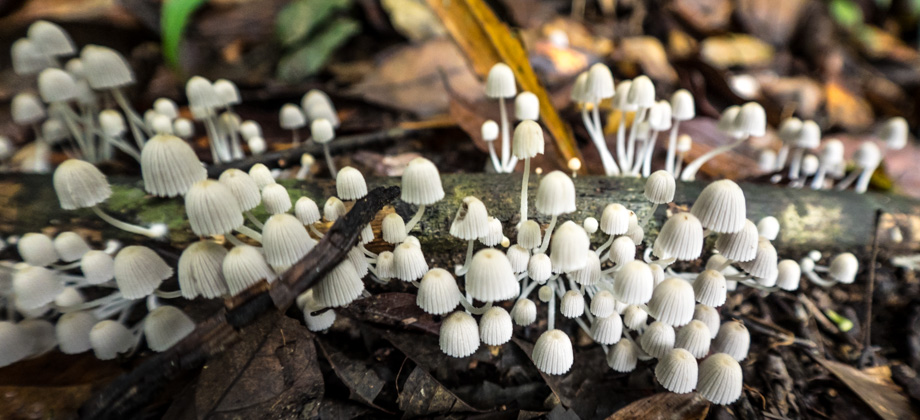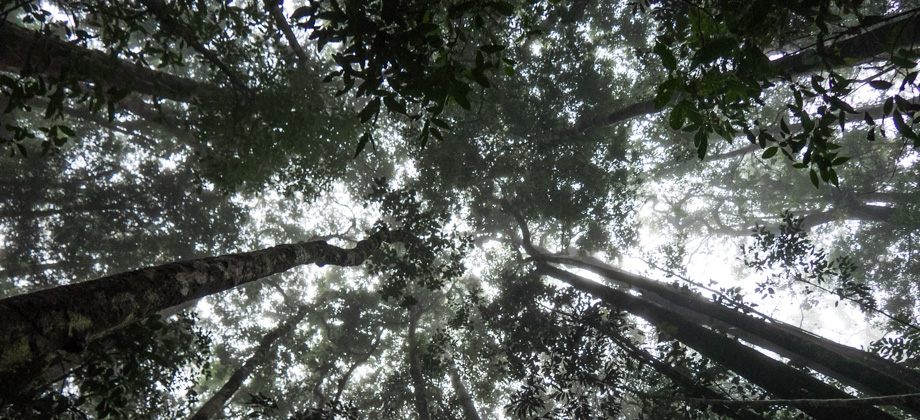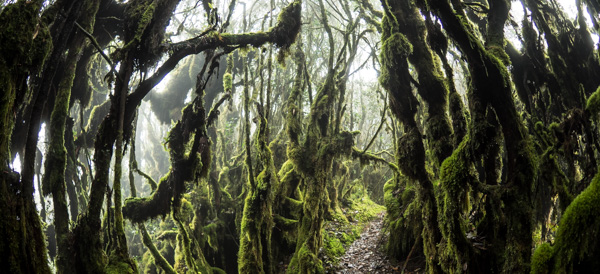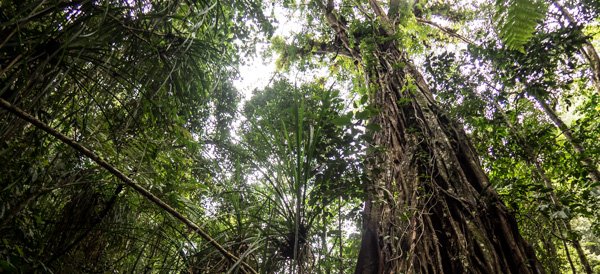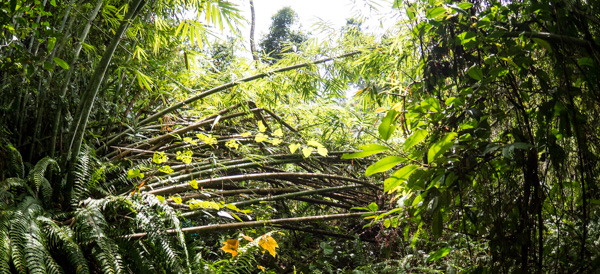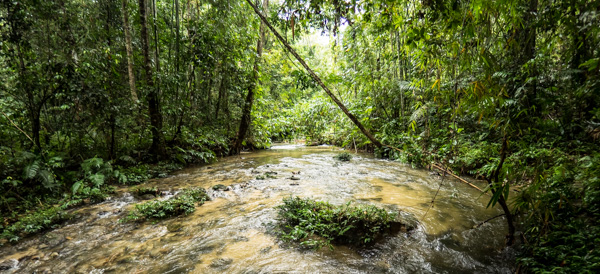GBB (CUS Connection) - Day 3
Ubiquitous Moss

We packed up camp in a dense soupy mist that morning as siamang gibbons
(Symphalangus syndactylus) howled and hooted off to the south. The others played music once again as they took their sweet time to get ready. All we could do was wait in exasperation as their music once again drowned out the tranquil sounds of the forest. We finally set off a few hours later at 10:20, and by then the howls of the gibbons had already moved to the west of us.
I was grateful to finally be walking. Today was the day where we were to tackle the three peaks, and so had a long walk in store for us. The estimate was approximately 10-12 hours in total: 3-4 hours to
Mount Bilah (
elevation : 2077 m), 3 hours to
Mount Bieh (
elevation : 2073 m) via
Mount Gerah (
elevation : 2103 m), and another 4-5 hours for the descent down to the campsite--which we should have been able to reach before dark if only we had left just three hours earlier.
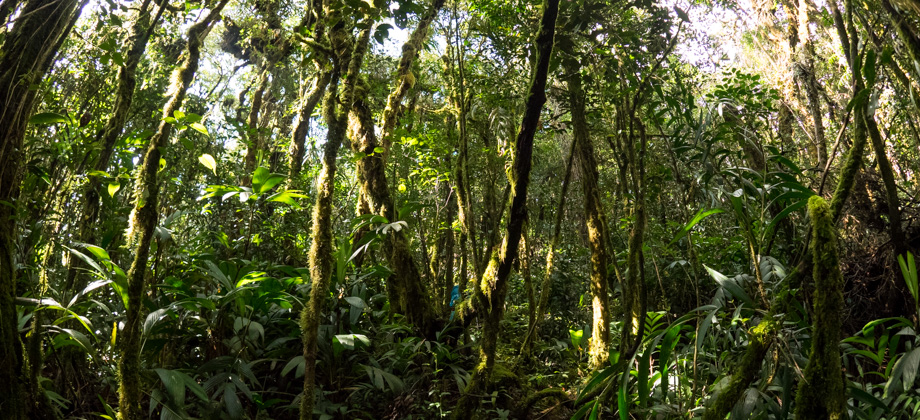
We began to walk north-east along what was now a ridge, and the whooshing sounds of hornbills
(Family : Bucerotidae) were heard as they flew over us. The slopes dropped away on both sides as it was the highest point that led up to the main mountain range. Following this ridge meant that we were tracing a natural path where the vegetation was less dense. The ridge also functioned as a good handrail for navigation, and its U- or V-shaped contours made it one of the very few features in the forest that could be located on a map. Another advantage was that the side canopy would occasionally thin out and magnificent views of the expansive forest would reveal themselves.
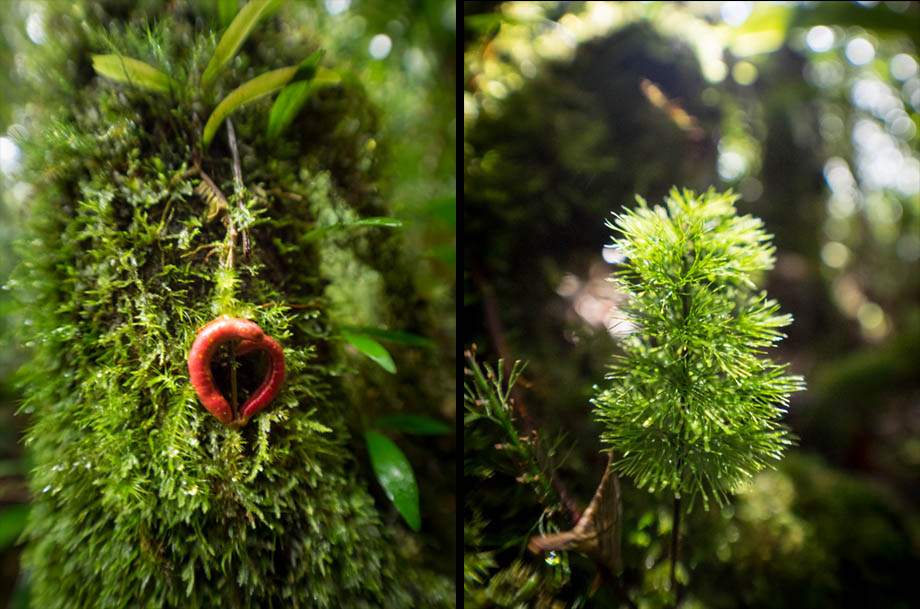
 A glaucous patch of pincushion moss (Leucobryum sp.)
A glaucous patch of pincushion moss (Leucobryum sp.)
Mosses and
mushrooms of all shapes and sizes were everywhere, and the dried up shriveled husks of pitcher plants could be seen nestled in the soft green mounds. Insects could also be seen crawling, squirming, and--like the yellow geometer moth
(Dysphania sagana)--fluttering around the moss. Some of the insects seek shelter in the moss, whilst others seek prey. The jumping springtails
(Subclass : Collembola) on the other hand--which are hexapods but are no longer considered insects--are attracted to scents that the mosses release and their presence helps the moss reproduce the same way that bees do with flowers.
Sometimes other animals such as birds and squirrels overturn patches of moss in their search for the hexapods that are hidden within. Some mosses such as pincushion moss
(Leucobryum sp.), have adapted to disturbances such as this, and have developed mechanisms such as rhizoids on their leaves that allow them to 're-anchor' themselves back into the ground!
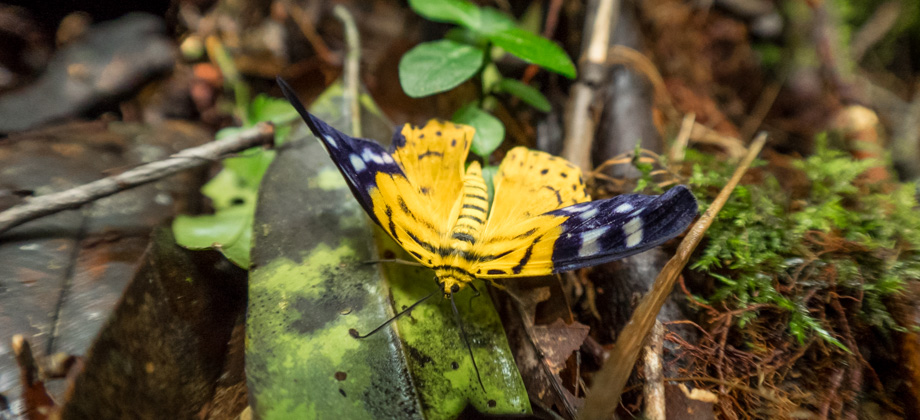 A yellow geometer moth (Dysphania sagana). This day-flying moth is often mistaken for a butterfly because of its bright colours
A yellow geometer moth (Dysphania sagana). This day-flying moth is often mistaken for a butterfly because of its bright colours

 We began to walk north-east along what was now a ridge, and the whooshing sounds of hornbills (Family : Bucerotidae) were heard as they flew over us. The slopes dropped away on both sides as it was the highest point that led up to the main mountain range. Following this ridge meant that we were tracing a natural path where the vegetation was less dense. The ridge also functioned as a good handrail for navigation, and its U- or V-shaped contours made it one of the very few features in the forest that could be located on a map. Another advantage was that the side canopy would occasionally thin out and magnificent views of the expansive forest would reveal themselves.
We began to walk north-east along what was now a ridge, and the whooshing sounds of hornbills (Family : Bucerotidae) were heard as they flew over us. The slopes dropped away on both sides as it was the highest point that led up to the main mountain range. Following this ridge meant that we were tracing a natural path where the vegetation was less dense. The ridge also functioned as a good handrail for navigation, and its U- or V-shaped contours made it one of the very few features in the forest that could be located on a map. Another advantage was that the side canopy would occasionally thin out and magnificent views of the expansive forest would reveal themselves.




